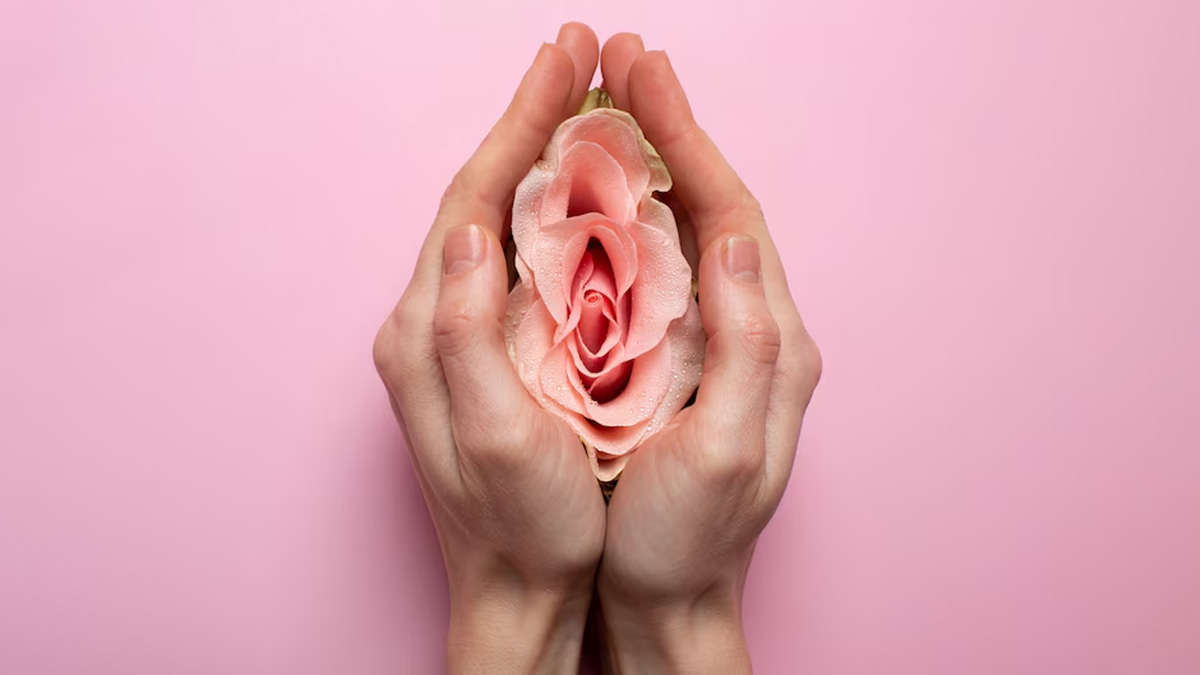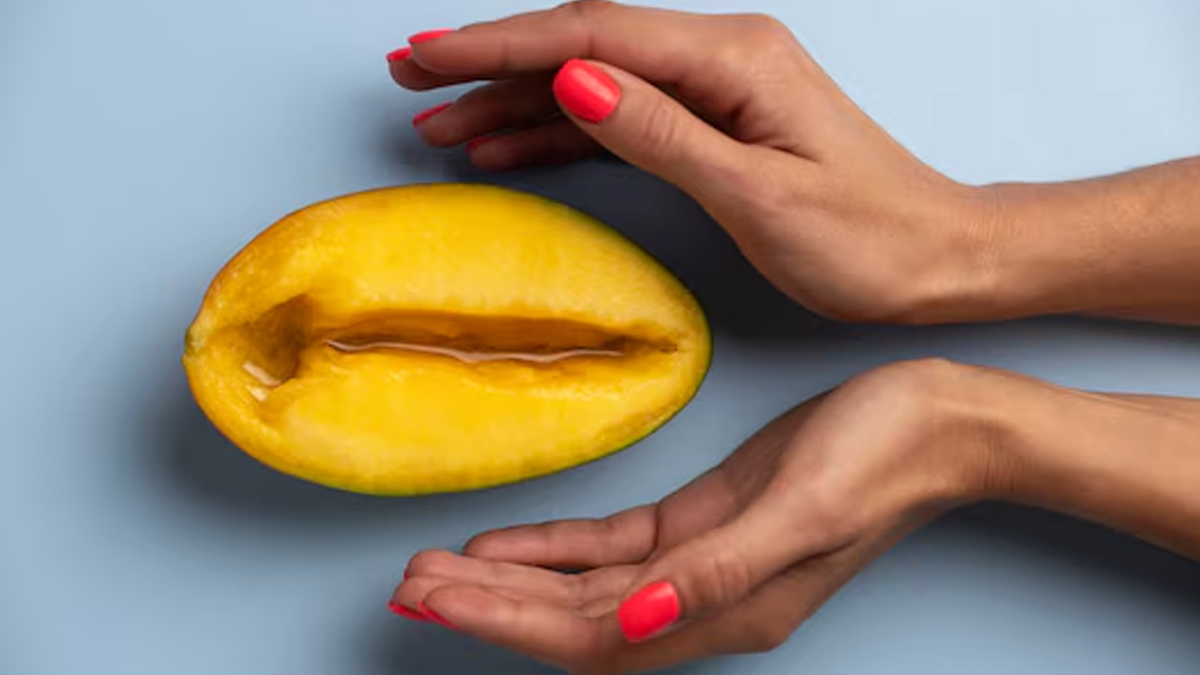
Pimples on the labia, or vulvar acne, can be uncomfortable and concerning, but they are generally not serious. Just like the skin on other parts of the body, the vulva and labia can develop pimples due to various reasons, including clogged hair follicles, sweat, and hormonal changes. It is important to understand the causes, ways to treat these pimples, and when to seek medical advice to ensure proper care and comfort.
Table of Content:-
To understand the causes of pimples on the labia and tips to get rid of it, OnlyMyHealth team interacted with Dr Neha Khandelwal, Director of the Department of Obstetrics and Gynaecology, Cloudnine Group of Hospitals, Kailash Colony, New Delhi.
Common Causes of Pimples on the Labia

Clogged Hair Follicles
One of the most common causes of pimples on the labia is clogged hair follicles. “The vulva, like other areas of the skin, has hair follicles that can become blocked by sweat, oil, and dead skin cells. When this happens, a pimple may form, which can appear as a small bump or whitehead,” Dr Khandelwal explained.
Friction
According to Dr Khandelwal, tight clothing, particularly synthetic underwear or non-breathable fabrics, can cause friction and irritation around the labia. This can lead to small, acne-like pimples, especially in areas where the skin is frequently rubbed.
Sweat and Bacteria
The genital area is prone to sweating, especially in hot weather, during exercise, or when wearing tight clothing. “When sweat mixes with bacteria and gets trapped in the pores, it can cause pimples to form. This condition is often referred to as folliculitis, which is the inflammation of hair follicles caused by infection,” Dr Khandelwal said.
Hormonal Changes
Hormonal fluctuations during menstruation, pregnancy, or even menopause can lead to breakouts on the labia. Dr Khandelwal notes, “Just like the face, the genital area can respond to hormonal changes by producing more oil, which can clog pores and lead to pimples.”
Ingrown Hairs
After shaving or waxing the pubic area, ingrown hairs may develop. An ingrown hair occurs when a hair grows back into the skin instead of up and out. This can result in a pimple-like bump that is often red, swollen, and sometimes painful.
Skin Conditions
Dr Khandelwal explained, “Certain skin conditions like hidradenitis suppurativa, a chronic inflammatory skin disease, can cause pimple-like lesions in areas like the groin and labia.” This condition requires medical treatment and differs from common acne in that it causes deeper, more painful lumps.
Infections
Though less common, some infections, such as bacterial vaginosis or sexually transmitted infections (STIs), can cause pimple-like bumps around the genital area. “If a bump is accompanied by other symptoms such as unusual discharge, pain, or itching, it’s essential to seek medical advice,” she warned.
Also read: Brown Vaginal Discharge But Not On Periods? What Could It Mean?
How to Get Rid of Pimples on the Labia

Here are some tips recommended by Dr Khandelwal to get rid of the painful pimples on the labia.
Keep the Area Clean
Gently cleaning the genital area with warm water and mild, unscented soap can help reduce the buildup of sweat and oil. Avoid scrubbing harshly, as the skin on the labia is delicate and can become irritated.
Wearing Breathable, Loose-Fitting Clothing
Wearing loose-fitting cotton underwear and avoiding tight, synthetic fabrics can help prevent pimples caused by friction and sweat. As per Dr Khandelwal said, “Cotton allows the skin to breathe and reduces the risk of irritation.”
Avoid Shaving Irritation
If you shave or wax your pubic area, consider using proper shaving techniques to reduce the risk of ingrown hairs and irritation. “Use a clean, sharp razor, shave in the direction of hair growth, and apply a soothing, fragrance-free lotion afterward. If ingrown hairs are a recurring issue, you might want to switch to trimming instead of shaving,” Dr Khandelwal advised.
Use Warm Compresses
Applying a warm compress to the affected area for 10 to 15 minutes a few times a day can help soothe the skin and encourage the pimple to come to a head and drain naturally. This also helps reduce swelling and discomfort.
Avoid Squeezing or Popping Pimples
As tempting as it may be, avoid squeezing or popping pimples on the labia. This can introduce bacteria into the area, leading to infection or scarring.
Over-the-Counter Treatments
You can use over-the-counter acne treatments that contain ingredients like benzoyl peroxide or salicylic acid, but it’s important to be cautious when using these products near the sensitive genital area. Dr Khandelwal emphasised, “Always consult a doctor before applying such products to ensure they are safe for use in this region.”
Stay Hydrated and Maintain a Healthy Diet
Drinking plenty of water and eating a balanced diet rich in fruits and vegetables can help improve skin health. Avoiding excessive sugar and processed foods may also reduce the risk of acne breakouts.
Also read: How To Get Rid Of Vaginal Odour Naturally?
When to Seek Medical Attention
While most pimples on the labia are harmless and can be managed with home care, some situations warrant medical attention:
- If the pimple is unusually large, painful, or does not improve with home treatments.
- If there are signs of infection, such as pus, fever, or increased redness and warmth.
- If you suspect the bumps could be related to an STI or another infection.
- If the pimples frequently recur, as this could indicate an underlying condition.
Conclusion
Pimples on the labia are often caused by common issues such as clogged hair follicles, sweat, and ingrown hairs. Maintaining proper hygiene, wearing breathable fabrics, and using gentle treatments can help manage and prevent these breakouts. However, if you experience persistent or severe symptoms, it’s essential to consult a healthcare provider for appropriate diagnosis and treatment.
Also watch this video
How we keep this article up to date:
We work with experts and keep a close eye on the latest in health and wellness. Whenever there is a new research or helpful information, we update our articles with accurate and useful advice.
Current Version